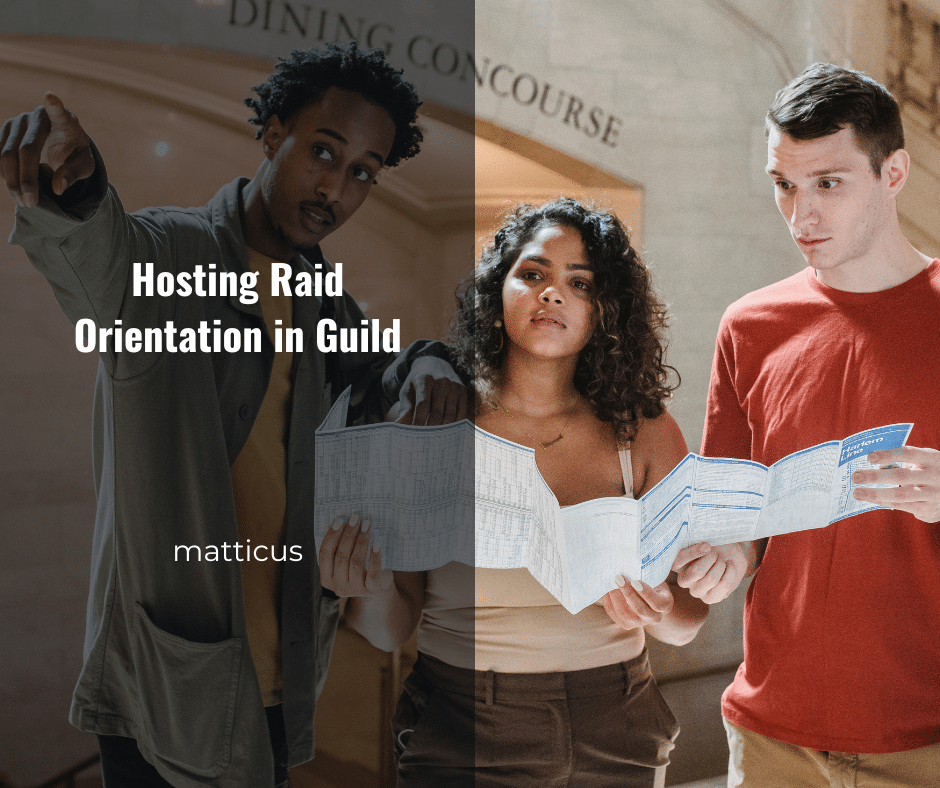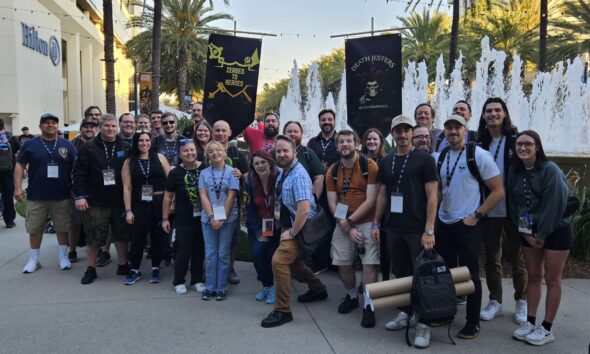Welcome to the new tier, everybody! We’re starting to kick off our raid this week. This is a great time to run raid orientation for the raid group, especially if you have many new players or if the raid team was on a break leading up to this point. For us it was mandatory because over half the team was new stemming from some major turnover. In this case, boss GM set up a preliminary officer meeting to go over the agenda for orientation and what to cover. I’ll dive into that one in a bit. Ultimately, he made some adjustments to an existing slidedeck that was created by one of the other raid teams in our community and co-opted some of those elements. I don’t really agree with some of the design choices, but I bit my tongue on that one.
If you want to watch DJ’s raid orientation, our GM did stream it, and you can find it here: https://www.twitch.tv/videos/1975224736?t=00h16m06s
What is Raid Orientation?
It’s exactly what it sounds like. You can liken it to your experiences when attending school for the first time.
Raid orientation is a crucial process where members of a guild come together to discuss, plan, and prepare for the challenges that lie ahead in a new raid tier. It’s the foundation upon which a successful raiding experience is built. This is where new members get to know each other, understand the guild’s strategies, and set their expectations with the goals.
This can be hosted in Discord and having your GM share their screen. They could also stream it and have it saved for anyone that missed out on it.
Benefits of Raid Orientation
But why?
- Enhances Team Cohesion: It brings players together, fostering a sense of community and teamwork. For a bonus, you can add some icebreaker games at the end.
- Aligns Goals: This helps to ensure that everyone is on the same page regarding the guild’s objectives.
- Preparation: Provides an opportunity to discuss strategies and requirements, reducing confusion during actual raids. We’d rather get this done now or during the week before we set foot into the instance.
- Resource Management: This helps in efficiently setting aside resources like consumables and loot. It also covers where players can find resources like assignments and strategy on Discord. In our case, we hold tier tokens until the end of the night to see what we have before distributing it all.
What Does Orientation Typically Include?
Player Expectations
This segment focuses on what the guild expects from each player. It includes commitment levels, understanding of class roles, our community code of conduct, and basic raiding etiquette. We expect our players to complete 4 keys weekly. They don’t need to be 20s, but if they can eventually strive to hit 16s to 18s consistently within the first few weeks, it’ll set our team up for success. This also means how to handle attendance issues and who their raid mentors are. Basically, the GM is covering policy.
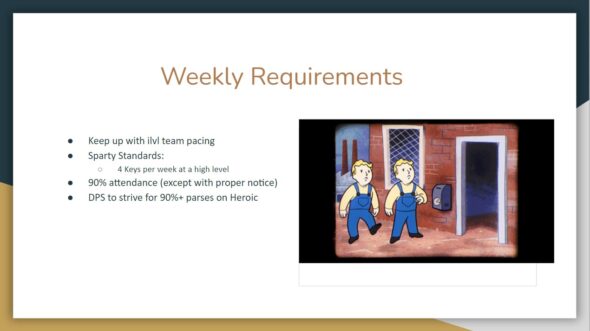
Raid Expectations
Here, we delve into the specifics of the raid content. This covers some strategies, boss mechanics, and the roles and responsibilities of each raid member. This means showing up on time. This means having the required WeakAuras installed and addons updated. It also means knowing their role and how to respond to mechanics in encounters while surviving. This could be its own night, though as we plan to have a film review on a different day before our raid night where we go over every encounter.
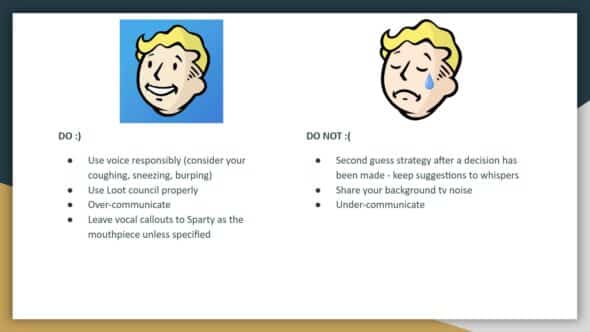
Consumables Expectations
Raiders need to come prepared with the necessary consumables. This part of the orientation covers the types of consumables required and how they contribute to the raid’s success, especially with the new health potions and other augments. Speaking of augments, there’s also the new reusable rune. Depending on your guild’s focus, that might be worth mentioning.
Loot Council
A key part of raiding is the distribution of loot. This section explains how the loot council operates and guides members on setting up their loot wish lists to make the process effective. We’ve also taken the liberty of requesting volunteers for the loot council. This is a call for members who wish to contribute more directly to the guild’s decision-making process with the resources and sims we have in place.
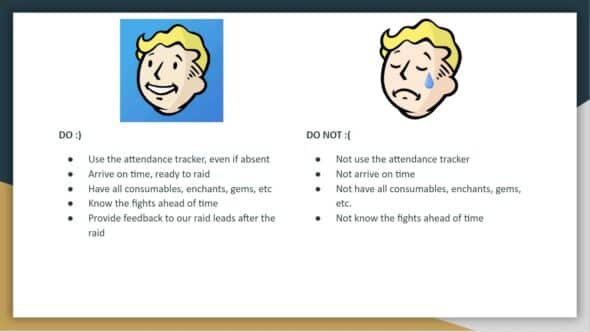
Goals and Pacing for the Tier from a Progression Standpoint
Setting realistic and achievable goals for the raid tier is critical. This includes discussing the pacing of the raid progression and what the guild aims to achieve each week. Even though we finished US 300 in Aberrus, we’re aiming for the US 400 mark this time at a slower pace. Think of this piece like setting the road map for the tier, including when raid extensions would begin.
Icebreakers
Think of some fun games you can play especially to help get newer members accustomed to the team. Sometimes we’d ask icebreaker questions but tell our players to type their answers in chat, but only press enter after a countdown hits 0.
Definitely consider running orientation at the start of a new raid tier! It’s a fun way to reconnect with your team if there’s been some time off between raids or a bunch of new players coming in. It helps set the tone for the rest of the tier and gets everyone primed as to what expectations will be like.
Lastly, I don’t know how I feel about the slides and how they were designed. I sure wish we had more Warcraft related looking assets in them though!
